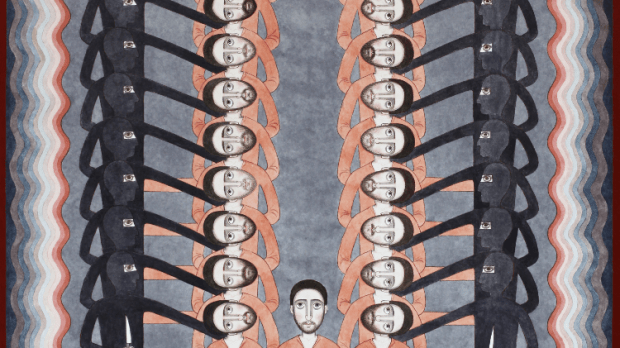The 21 Coptic Christians beheaded by the Islamic State group in Libya had been dead only weeks when the Coptic Orthodox Church declared them martyr-saints.
The images released of their beheadings on the Mediterranean Coast of North Africa shocked the world. It deeply affected a Serbian Orthodox iconographer living in Germany, and now the icon he has written—that is, painted—is being auctioned off so the proceeds can help the families of the 21 victims.
Nikola Sarić also says he hopes that through viewing the icon, titled “Holy Martyrs of Libya,” people will pray for the conversion of the terrorists.
Sarić, born in 1985 in Bajina Bašta, Serbia, studied at the Academy of Serbian Orthodox Church for Arts and Conservation in 2014.
Since 2011 he has lived and worked in Hannover, Germany. He spoke with Aleteia by Skype.
How did you come to write an icon about these martyrs?
I saw these photos and this story on the internet, and of course, like many other people, it touched me. I was thinking about them, and the idea came spontaneously.
I think it was also out of respect and love for them. It was something personal. I had it in my thoughts and developed it over time, like any other ideas in my work. I think about it and it constructs itself over time.
Tell me more about yourself and your work.
I’m from Serbia and have my studio here in Hannover and paint primarily religious themes. I studied iconography in Belgrade, at the Academy of Church Arts.
Religious themes are interesting to me. Many aspects appeal to me on a personal level, as a person who sees these stories in his daily life and draws some conclusions out of it. They are universal, and I am inspired by them, and I make interpretations of them, and I hope that some people through my painting also come to the stories and draw their own interpretation.
What do you mean you are a person who sees these stories in his daily life?
We come to these stories through the liturgy or by faith, and I think about them. They are stories about us, about people, about the world, about what is good and what is bad, about God and the relationship between God and man and between people themselves. They are universal and timeless.
What were some of the things you were thinking of and feeling when you were writing this icon of the 21 Martyrs?
It came into my heart, this story and the pictures—they are really striking. It’s somehow a story we know already from the history of martyrs. The whole example, to me, of staying by God and staying by Christ and being proud of it, staying in that love, is the most powerful example. I take these kinds of stories as very personal, and they mean a lot to me as someone who is Christian. I developed a kind of love toward them, and out of that the idea came.
But it’s very difficult to analyze why I came to this idea. It’s kind of my style, which has developed over many years of study, and which is still developing. The visual language is very similar to my other works. It just constructs itself.
You included the executioners in the icon. Of course they are part of the story, but was there any deliberation about excluding them?
Including executioners, these terrorists, these murderers is something that is not new in visual narration, especially iconography, including the ones who kill martyrs. On the other side, it’s also kind of a document of what happened: these people killed these people. It’s documenting the story of how it happened…. We can imagine it without them, [but] it would have a completely different feeling, a different point of view. They are there, and it tells the story of the horror, the killing of someone. But it’s also the story of life and the story of communication and relationship between Christ and the martyrs. So I think it’s good that we have both aspects of the story.
Is there some thought of perhaps the person viewing the icon, praying with the icon, to be praying for the conversion of the executioners?
I think that would be the right thing, to be praying for everyone. We do pray for our enemies and someone who is doing evil against us. We are invited to pray for everyone. If that is the case I would be glad if that also happens—if any of the executioners would change his mind and feel sorry and repent of what they did.
John Burger is news editor for Aleteia’s English edition.

